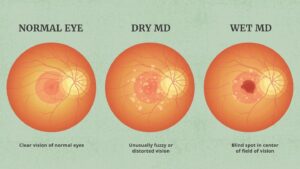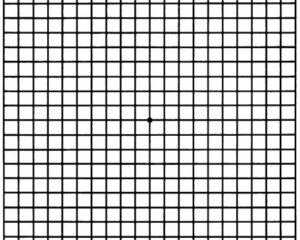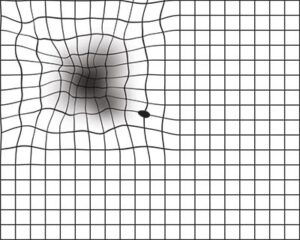Macular Degeneration part 1

Macular Degeneration part 1
Dr. Claire Arcidiacono, ND
Macular Degeneration is more common than you might think. In fact according to the American Academy of Ophthalmology age related macular degeneration is one of the leading causes of vision loss in those age 50 and older! Now I am sure you noticed this is labeled part 1. This is because I wanted to really get into depth with exactly what macular degeneration is and I did not feel that one part would really do that justice. Anyhoo when most people hear macular degeneration the first thing that pops into their mind is that macular degeneration is a buildup of drusen. While drusen is a big part of macular degeneration it’s not the entire picture. Macular degeneration is a loss of central vision. However there is typically no loss or change in peripheral vision. There are 2 main reasons why this vision loss occurs and these are due to the 2 different forms of macular degeneration. (1) The 1st form is called wet macular degeneration. This form only accounts for approximately 10% of all cases. (2) While this form is less common it is more severe and you will typically loose vision faster. Now what happens when you have wet macular degenerations is new abnormal blood vessels grow underneath the retina. These new vessels are “leaky” and blood as well as other fluids leak out and this causes the macula to be scarred. Now the other form is much more common and accounts for approximately 80 % of all cases. This is called dry macular degeneration. This is where drusen is important. When you have dry macular degeneration parts of the macula grow thinner and tiny clumps of drusen grow leading to a loss of central vision. (1) To sum things up both forms of macular degeneration lead to changes and eventual loss of central vision. However their underlying mechanism is different (increase in leaky blood vessels vs drusen). What does this look like? Please see the attached picture for a comparison. (3)

Macular degeneration is a prime example of a very series condition that can have either very subtle or even no early warning signs. It is a prime example of why regular eye screenings are so important. What are some of the symptoms you may experience? At 1st you may have trouble seeing in low light. You may notice that your vision is blurry for both up close and distance. Additionally colors may not be as bright. As the disease progresses there may be vision changes or even vision loss. In later stages straight lines may look wavy or corked. In the center of your vision there may be a blurry or even blank spot. Sudden and significant loss of central vision may indicate the development of wet macular degeneration. (4) Now I bet your question right now is but doc how do I know if lines are wavy? Do I just grab a notebook and look at the lines? There is actually something called the Amsler grid. This can be used to help monitor your vision especially if you have any of the risk factors for macular degeneration. Please see the below pictures for a healthy view of the grid as compared to what the grid may look like if there is macular degeneration. (1)
Healthy

Possible macular degeneration

According to the American Academy of ophthalmology to use this grid you do the following:
- Keep the Amsler grid in a place where you see it every day. Many people keep an Amsler grid on their refrigerator door or on their bathroom mirror.
- In good light, look at the grid from about 12 to 15 inches away. Be sure to wear your reading glasses if you normally use them.
- Cover one eye. Look directly at the dot in the center of the grid with your uncovered eye. Notice if any of the lines look bent or wavy. See if any part of the grid looks blurry, dim, or out of shape.
- Now cover your other eye and test your vision this same way again. (1)
When it comes to macular degeneration there is still a lot of talk about! In my next blog we will be reviewing the risk factors, as well as any complications that can occur. Lastly we will be reviewing what you can do to lower your risk factors and what supplements are important when you are diagnosed with macular denegation.
Sources:
- https://www.aao.org/eye-health/diseases/amd-macular-degeneration
- https://www.ncbi.nlm.nih.gov/books/NBK572147/
- https://www.google.com/imgres?imgurl=https%3A%2F%2Fimages.everydayhealth.com%2Fimages%2Fvision%2Fmacular-degeneration%2Fwet-vs-dry-age-related-macular-degeneration-1440×810.jpg%3Fsfvrsn%3Df45f7ca3_1&tbnid=vUH7hVJQ7aD4NM&vet=1&imgrefurl=https%3A%2F%2Fwww.everydayhealth.com%2Fmacular-degeneration%2Fwet-vs-dry-age-related-macular-degeneration%2F&docid=_FnFiOuO37MM7M&w=1440&h=810&hl=en-us&source=sh%2Fx%2Fim%2Fm4%2F7&kgs=f081b645330207f2&shem=abme%2Cssim%2Ctrie
- https://www.healthline.com/health/what-are-the-early-warning-signs-of-macular-degeneration#diagnosis
